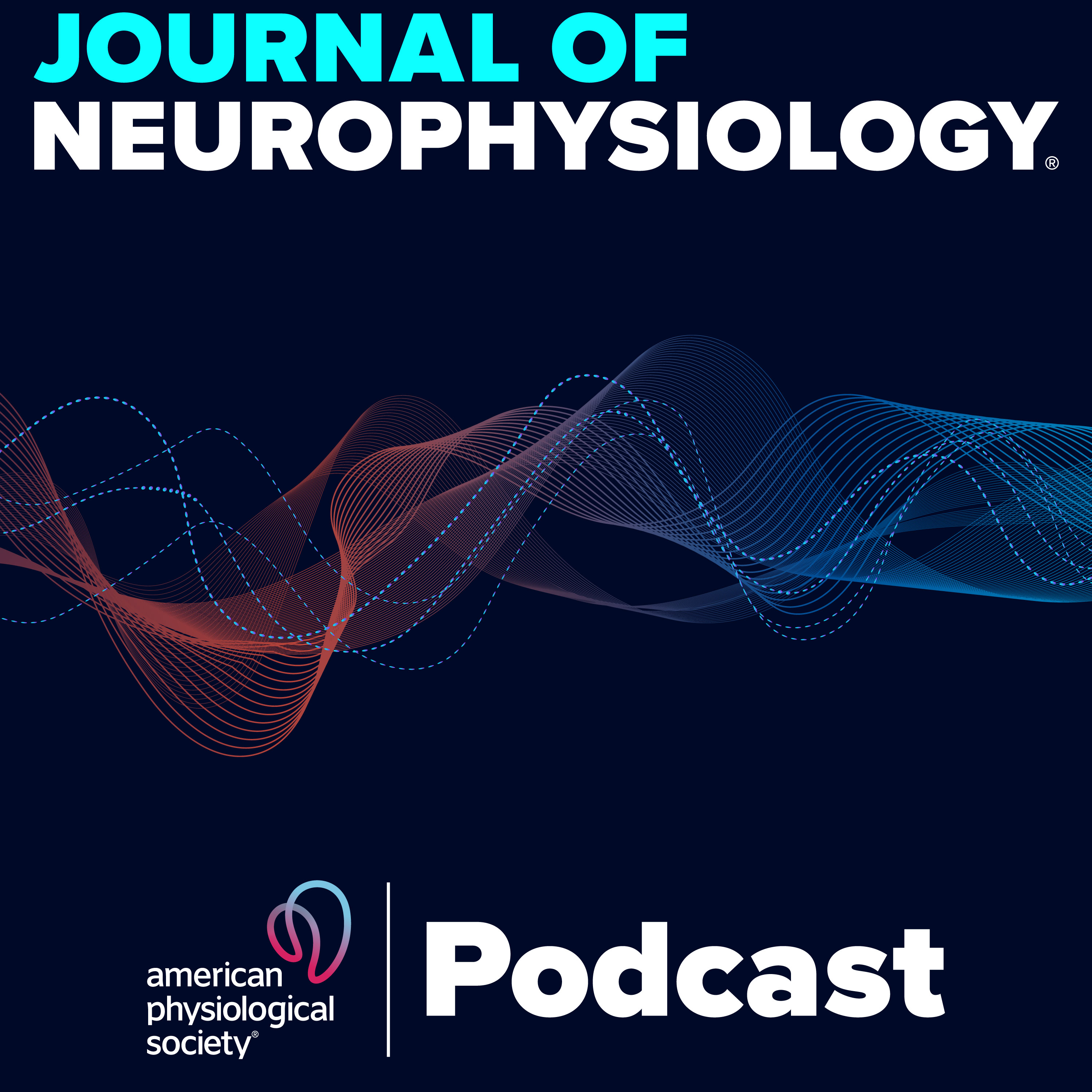Episodes

21 minutes ago
H-Reflex as a Biomarker: Insights from ALS Research
21 minutes ago
21 minutes ago
In this episode of the Journal of Neurophysiology’s podcast series, coauthor Véronique Marchand-Pauvert discusses key findings from the team's published study, "Synaptic dynamics linked to widespread elevation of H-reflex before peripheral denervation in amyotrophic lateral sclerosis." The episode explores how an increased H-reflex—observed even without clear evidence of peripheral denervation—may reflect early synaptic changes in ALS. Marchand-Pauvert explains how this phenomenon appears widespread across different onset sites and may result from reduced inhibitory control over Ia afferent-motoneuron transmission. While its association with exaggerated reflexes and spasticity may limit diagnostic specificity, the H-reflex’s measurable nature makes it a promising biomarker in ALS clinical trials.
Journal of Neurophysiology 2024 132:5, 1541-1560
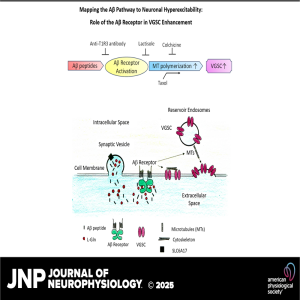
48 minutes ago
48 minutes ago
In this episode of the Journal of Neurophysiology's podcast series, we spotlight the research titled “Discovery of the Aβ receptor that controls the voltage-gated sodium channel activity: unraveling mechanisms underlying neuronal hyperexcitability.”
Alzheimer’s disease is well known for memory loss and cognitive decline—but behind these symptoms lies a web of complex neuronal dysfunction. This study reveals that amyloid beta peptides (Aβs), known to enhance sodium channel activity and drive hyperexcitability, exert their effects via an unexpected molecular player: the type I taste receptor, T1R2/T1R3.
Using advanced patch-clamp techniques, the researchers identified this novel Aβ receptor, opening a promising new path for therapeutic intervention. By targeting this receptor, future treatments may be able to reduce Aβ-induced hyperactivity and slow AD progression.
Journal of Neurophysiology 2025 133:6, 1861-1885
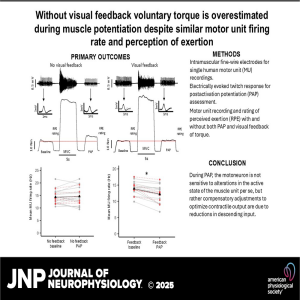
5 hours ago
5 hours ago
In this episode, lead author Alexander M. Zero highlights their newly published research, “Without visual feedback voluntary torque is overestimated during muscle potentiation despite similar motor unit firing rate and perception of exertion.”
Alexander Zero breaks down their findings on how visual feedback — or the lack of it — influences voluntary torque control during muscle potentiation. Despite changes in muscle state, the study reveals that motor unit firing rates and perceived exertion remain consistent without visual cues. This suggests that the nervous system adjusts motor output not through peripheral feedback, but through central mechanisms influenced by perception.
Tune in for a fascinating dive into neuromuscular physiology, the role of sensory feedback in motor control, and what these insights mean for athletic training, rehabilitation, and our broader understanding of voluntary movement.
Journal of Neurophysiology 2025 133:3, 775-783
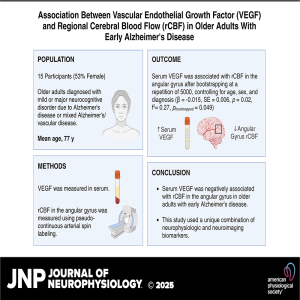
6 hours ago
6 hours ago
In this episode, coauthors Dr. Bing Xin Song and Dr. Krista L. Lanctôt give a snapshot of their recently published manuscript, "Vascular Endothelial Growth Factor and Regional Cerebral Blood Flow in Early Alzheimer’s Disease." Building on past in vitro and in vivo studies, their work highlights a compelling link between angiogenesis and cerebral blood flow (CBF) in individuals with early-stage Alzheimer’s disease. Using a combination of neuroimaging and neurophysiology techniques, the study reveals a significant association between circulating vascular endothelial growth factor (VEGF) and regional CBF.
Journal of Neurophysiology 2025 133:3, 924-929

Thursday May 15, 2025
Aging, Force, and Feedback: Rethinking Proprioception Through Motor Unit Insights
Thursday May 15, 2025
Thursday May 15, 2025
In this episode, coauthor Mélanie Henry highlights the findings of the newly published study, “Influence of Age and Feedback Modality on the Proprioceptive Sense of Force: Insights from Motor Unit Recordings.” She discusses how different types of feedback—auditory vs. visual—affect force-reproduction accuracy across age groups. Surprisingly, middle-aged and older adults performed better with auditory feedback, an improvement linked to increased motor unit coherence in the beta band. Tune in to explore how aging influences proprioception, how the brain adapts to different sensory inputs, and what this means for motor control and rehabilitation strategies.
Journal of Neurophysiology 2025 133:4, 1103-1115
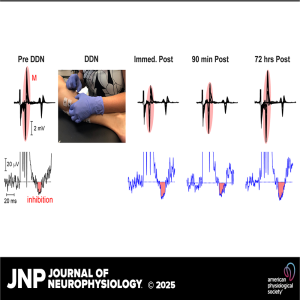
Thursday May 15, 2025
Unlocking the Spine: Exploring the Neurophysiology of Dry Needling
Thursday May 15, 2025
Thursday May 15, 2025
In this episode, coauthor Gretchen Seif discusses her recently published study, “Neurophysiological Effects of Latent Trigger Point Dry Needling on Spinal Reflexes.” Dive into the fascinating world of deep dry needling (DDN) as she highlights its impact on spinal reflexes in the triceps surae. Dr. Seif breaks down the study's key findings—including unchanged H reflex responses and increased soleus inhibition immediately and 72 hours post-DDN—along with the observed gains in ankle range of motion. Learn how these differential effects on excitatory and inhibitory reflexes reveal the complex spinal-level mechanisms of DDN and what it could mean for clinical practice.
Journal of Neurophysiology 2025 133:1, 288-298
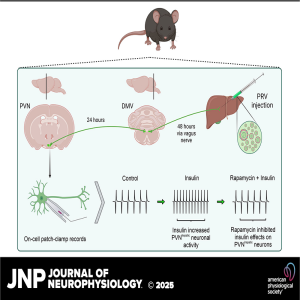
Friday Mar 07, 2025
Friday Mar 07, 2025
In this episode, coauthor Karoline Martins dos Santos discusses the recently published research, "Insulin activates parasympathetic hepatic-related neurons of the paraventricular nucleus of the hypothalamus through mTOR signaling." The study investigates the complex role of insulin in regulating hepatic glucose production, focusing on how insulin influences specific brain regions. While it's known that insulin reduces liver glucose production, the precise mechanisms and brain areas involved have remained unclear. Dr. Martins dos Santos explains how insulin activates parasympathetic hepatic-related neurons in the paraventricular nucleus (PVNhepatic) and how this process relies on mTOR signaling.
Journal of Neurophysiology 2025 133:1, 320-332
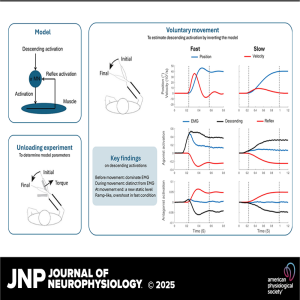
Friday Mar 07, 2025
Friday Mar 07, 2025
In this episode, coauthor Lei Zhang explores the research titled "Estimating descending activation patterns from EMG in fast and slow movements using a model of the stretch reflex." Lei introduces a novel method that directly estimates descending activation from electromyographic (EMG) signals and arm kinematics by inverting a model of the spinal stretch reflex—without relying on muscle models or an arm dynamics model. This innovative approach uncovers how movement speed influences the time structure of descending activation, while also highlighting the crucial role of the spinal stretch reflex in movement generation.
Journal of Neurophysiology 2025 133:1, 162-176
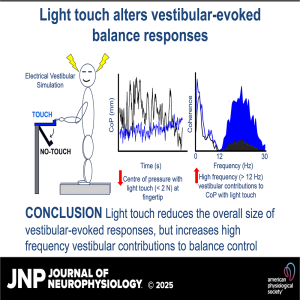
Friday Mar 07, 2025
Friday Mar 07, 2025
In this episode, coauthor Megan Goar discusses the recently published research titled "Light touch alters vestibular-evoked balance responses: insights into dynamics of sensorimotor reweighting." The research uncovers how minimal fingertip contact (light touch) during balance tasks can reduce the impact of electrical vestibular stimulation (EVS) on body sway. Not only does this touch alter sway magnitude, but it also reveals a high-frequency center of pressure element, tied to vestibular inputs, that is typically unseen in free-standing postures. Ms. Goar explains how these findings highlight the central nervous system’s remarkable ability to adaptively reweight sensorimotor processes to optimize balance control.
Journal of Neurophysiology 2025 133:1, 142-161
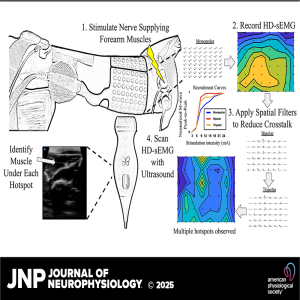
Friday Feb 14, 2025
Friday Feb 14, 2025
In this episode, coauthor Ernesto Bedoy discusses their recently published research, "Improving Localization and Measurements of M-Waves Using High-Density Surface Electromyography." The study presents an innovative approach to enhancing the measurement of evoked potentials through high-density surface electromyography (HD-sEMG). By incorporating spatial filters and ultrasound imaging, the research significantly improves the precision and localization of evoked potentials, providing a more accurate method for assessing motor pathway integrity. These advancements hold promise for developing better tools to detect and treat neurological deficits, offering a significant contribution to the field of neurophysiological research.
Journal of Neurophysiology 2025 133:1, 299-309

